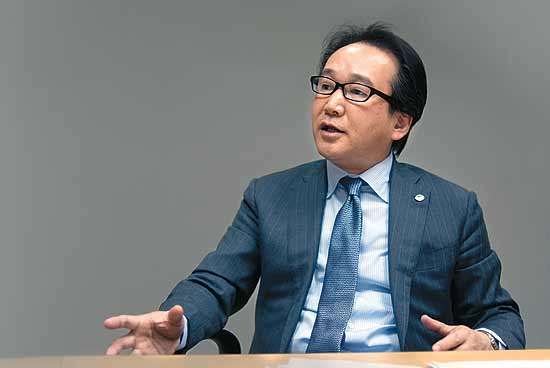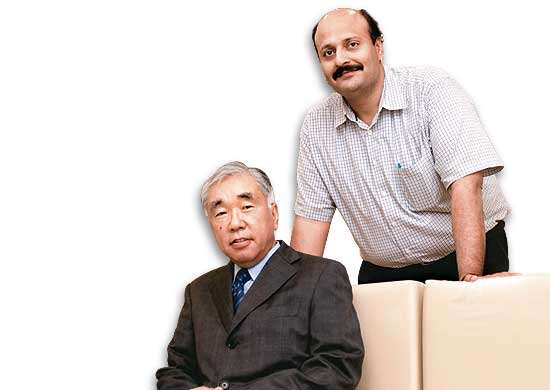In a freewheeling chat, Arvind Thakur, President and CEO of NIIT Technologies, spoke to Dr Amit Kapoor of the Institute for Competitiveness about the challenges and opportunities before the IT industry.
Tell us about your industry.
The technology industry has been growing in leaps and bounds since the early 1990s. It has truly put India on the global map. It’s an industry that has leveraged the significant demographic advantage we have as a country—our technical workforce and young population. Twenty years ago, the large population was considered a liability. Now, 20% of our export earnings come from this industry.
In your opinion, what is the biggest challenge faced by India?
Employability. The population, if not employed or not made employable, will become a huge liability for the nation. Our biggest challenge is reforms that make sure education is available to everybody. The sheer resources required to accomplish that are gigantic and so the government has to play a significant role in this space.
Do you think shared responsibility between the government and corporates will prove beneficial here?
I do. The role government has to play is in basic education; the role corporates can play is in providing skills. As it is very difficult for corporates to get involved in a big way in primary education, they could probably adopt a few institutions as part of their corporate social responsibility. But when it comes to higher education, it becomes easier for them to participate, as it is a time when individuals treat education as an investment with returns.
The unavailability of skilled labour is a huge challenge; How do you foresee this really changing?
That is what we need to work on. At the same time, for the industry as a whole, we need to look at ways and means by which our businesses become less labour-dependent. If you look at the last decade, the industry has grown on a value proposition that is essentially around cost arbitrage. We need to focus more and more on providing value. We need to build businesses where we focus not on the input, which is the cost arbitrage, but on the output, which is the value the business gets. We need to invest in intellectual property (IP) to be able to provide that value.
We need to focus more not on the cost arbitrage, but on the value the business gets.
The reference to IP is an interesting one. Is it something around patenting?
Well, not really. Patenting would mean R&D, doing the basic research and creating something very unique, which is your own and which you can capitalise on. I’m talking about moving business away from pure services to creating intellectual property that you own, a platform piece of software that is repeatable, reusable. There’s a lot of value that already exists in your software so whatever you provide your customer is an addition over and above what value exists.
In fact, the value proposition was about cost but now you’re actually moving from cost to value and away from labour-intensive processes. What are you really doing for that?
We’re doing many things. Firstly, if you look at the industry’s evolution, traditionally it has exploited its value proposition by providing application development and maintenance services. This was really the first wave of offshoring and was followed by another wave where business process outsourcing took place.
Currently, the situation in the country is such that with improved infrastructure and reduced communication costs, we’re emerging into the third wave, which is infrastructure outsourcing. Now, when you start moving into areas like remote infrastructure processing, you start focusing on issues that have less to do with cost and more to do with managing risks .You start entering contracts that are output-based, a move towards value addition, which is the first step. The second step is to create platforms, pieces of software around which you offer complete customer services. And the third step, the most exciting, but which is going to be a major disruption that we see taking forward, is to offer all these services on the cloud.
How do you manage risk? Secondly, what is the wave of disruption that you are really seeing?
When you look at managed services contracts, you get into service-level agreements with customers. And if you do not meet that service level, then the service credit there would actually be a considerable penalty. So, you cannot fail in that service level and manage the risk accordingly.
To the second question, I would say the cloud computing functioning would actually prove a significant disruption because it would be similar to the functioning of the power industry, wherein you make huge initial investment on infrastructure but offer service on demand. Citing an
example, if you want to do a spreadsheet, you can get it directly from the cloud by paying a small amount without buying software licences. Thus, licensing models and the way you do business in terms of application delivery are going to change dramatically.
So, are you learning from the telecom industry or is it learning from you?
There is a blurring distinction between the two industries. We are coming from the infrastructure side and getting into value-added services, while they are moving from providing value into the infrastructural sphere. At some point, there will be a merger of the two capabilities.
We are constantly searching for discontinuities because any kind of discontinuity creates opportunity.
Who is your competition?
For our business, there’s competition all over the place. The industry segments we focus on are financial services and within financial services, insurance, travel and transport, and distribution. Insurance is a huge space and there are some sub-verticals within insurance where we have no competition. In commercial insurance, insuring large-value assets like ships, satellites or oil rigs is, in a way, specialised insurance. There, we have no competition: we’re the leading provider in that particular space. And 30% of all transactions that happen on the Lloyd’s market happen on our platform. So, we don’t see competition in that space.
Do you see some kind of convergence happening in terms of strategies that companies follow?
If you observe our legacy, we actually spun out of NIIT in 2004. Till then, we were part of NIIT. And, as NIIT has its roots in education, the shift from education to software was a natural evolution. When we grew, we actually focused only on current and emerging technologies. We built our software business on the e-commerce boom in the late 1990s. But we were severely impacted during the dotcom meltdown. We didn’t create a legacy practice and we missed the Y2K opportunity, because legacy was not the area we focused on since we were an education company. In 2004, when we de-merged the company, we were just another mid-sized IT services organisation in an environment dominated by the scale players. Though our approach to building our business was to build specialisation, focus and differentiate, we defined for ourselves that as a company, we would be the best in the areas that we focus on and be big enough.
How do you manage cost, how do you focus and differentiate and how do you build it across the value chain?
In a few areas, the way we do business in the next decade is going to be very different from the way we did it in the last decade. The next decade will be all about providing value. In order to provide value, we’ve embraced new business lines that are essentially non-linear. Our traditional business in the industry has been linear, which means growth and revenues imply proportional growth in headcount. We talked about managed services and platform-based services where you have to invest in IP, and also about cloud services. Already, 26% of our revenues are coming from these business lines; our goal is to make this 35% by 2012. The real scale, therefore, is going to come from these emerging business lines. And we believe we have an early-mover advantage in these areas. So, we’re investing a lot in these three areas: IP, trading platforms and I just talked about the Lloyd’s Market, where our platform is a leader.
Similarly, we have our platforms in the travel space. But we started doing something even more unique. We started partnering with our customers to build platforms with which we can go to the market together. For instance, we work with Singapore Air Terminal Systems: we built the cargo-down handling solution in Changi Airport.
Strategy is as much about doing new things as about giving up some things. Giving up is a more difficult task, right?
Yes, it is, and there have been many instances in the history of the organisation. But if I look at something in the recent past, the period of the downturn was a time to reflect on what you should be doing and what you shouldn’t. And what we found was that quite a bit of consolidation happened during the economic downturn. So, customers who had multiple vendors decided to consolidate and have fewer vendors. What we observed was that, whenever such consolidation happened in segments where we were strong, like insurance or travel, it happened with us. But in the areas where we could not fully differentiate, we lost out. Retail is a good example and so we took a call to exit from that space. Instead, we said, ‘let’s use this available bandwidth to embrace new opportunities’. And the big, new opportunity that we’re going to pursue is healthcare. To my mind, healthcare is recession-proof. Spending in healthcare is not in billions but in trillions of dollars, of which the largest spend happens in the US. And so we’ve got very sharply focused on the US; there is a major disruption with Obama’s health reforms and this is surely going to create a huge opportunity for technology companies.
Why healthcare and why not something else is a different question, but when we looked at our business going forward, we identified four to six mega trends. For example, climate change is a huge mega trend. Anything and everything that we do in the next decade will have an impact on the climate, and we’ve got to take care of it. Similarly, regulation is a definite mega trend. More regulation, by the way, means more reporting, and more reporting means more business for us because we’re in the business of creating reports. Likewise, I feel that as long as there is disparity, economic disparity, global conflicts will continue and security will always be a big area for technology spending.
So, you’ve segmented yourself—you’ve decided what not to do and then you’re leveraging unique sets of activities somewhere. What are those sets of activities?
We are constantly searching for discontinuities because any kind of discontinuity creates opportunity. As I mentioned, in the healthcare space, the Obama health reforms are a major discontinuity; we’re moving into that particular space. In the financial services space, economies slowed down, creating this huge requirement of regulation, which again is a major discontinuity. The travel space is very information-intensive; if you don’t have technology in travel, you can close down. Reservation systems have been built on a technology that actually died in the 1960s. It’s called TPF, the IBM technology. But that is what keeps everything going. And, over the years, it’s just been refined to perfection and the whole industry runs on this. Now, it’s a rare skill set, so that’s a discontinuity; if you have capability in that technology, it makes you unique.
What are the challenges that you face when you are exploiting discontinuities?
Visibility. The scale players are more visible. We have to work hard to make ourselves visible in the segments that we focus on. A good amount of our energy goes into participating in industry forums and a good part of our marketing dollars go into creating visibility in those segments. That is an area where we need to work on constantly.
What are you doing in this regard?
Well, many things. Number one, some of our research analysts come out with their surveys. Another thing we do is choose marketing events carefully as we don’t have unlimited resources to spend on marketing. We see which industry events are important and we participate in them. We try to present technical papers and make ourselves visible by virtue of the insights that we can bring to the technology in those industries. So, a whole host of such activities enable us to build visibility.
How do you define strategy for yourself?
I think you, as a professor, are better equipped to handle that question. ‘How do you define strategy?’ Well, I would say, strategy is situation-y and has to do with a set of actions that you take to address that situation. It’s as simple as that!
What’s your vision?
It’s very simple; to be the first choice.
The whole industry is working towards being the first choice.
Absolutely! In fact the biggest challenge we have in the company is to continuously reinforce that message and getting people aligned. Because you’re growing, you keep adding new people and there is also some attrition.
That’s a basic hazard that you have to face within the industry.
Not a hazard—it is business as usual. There’s a good amount of training and development that takes place in all technology companies to manage attrition. Besides that, most technology companies have invested a lot on matured processes. And when you do that, you convert the art form of programming into an engineering discipline and are not dependent on individuals. So, as long as you know the subject, and you follow the process, you can consistently come up with good quality. And that’s the principle employed on the shop floor.
Anything more you would like to share?
Well, I think the young population faces a very different problem today—they’re spoiled for choice. I still remember when we were graduating—I passed out of IIT Kharagpur—for every job, we used to wear a tie and suit, and there would be 20 guys competing for the same job. Today, we wear a tie and suit and go to the campus trying to convince people to join the organisation.
What message would you like to give business graduates, since you say they are spoiled for choice?
In our times, the stress used to be: ‘will I get the right job?’ Today, it is: ‘have I got the right job?’ Youth today is very ambitious and impatient. They want to get on with things. Access to the Internet makes it all the more easier. The net result: job hopping. But youngsters have to realise that experience comes from failures. The biggest learnings in life are out of failures.
4 CS Model
Competition
- Specialisation used as an effective tool to compete in the marketplace, adoption of non-linear business lines.
Context
- Dearth of skilled labour.
- Functioning of the cloud a major disruption.
- Management of attrition levels.
Customer
- Looking for differentiated products.
- Domestic and international.
- Three focused sectors: insurance, travel and transport and distribution.
Company
- Focus on providing value and not on cost arbitrage.
- Moving away from labour-intensive processes.
- Search for discontinuities.
- Striving to become the first choice by following a policy of differentiation.
Evolution of the Industry
Wave 1
- Exploiting value proposition from providing application development and maintenance services.
Wave 2
- Whole business process outsourcing.
Wave 3
- Infrastructure outsourcing made possible by the improved infrastructure and reduced communication costs.
CEOs across India speak on strategy and leadership, in an exclusive series developed jointly by Outlook Business and the Institute for Competitiveness. The StrateSpeak interaction was published with Outlook Business on March 19, 2011.























